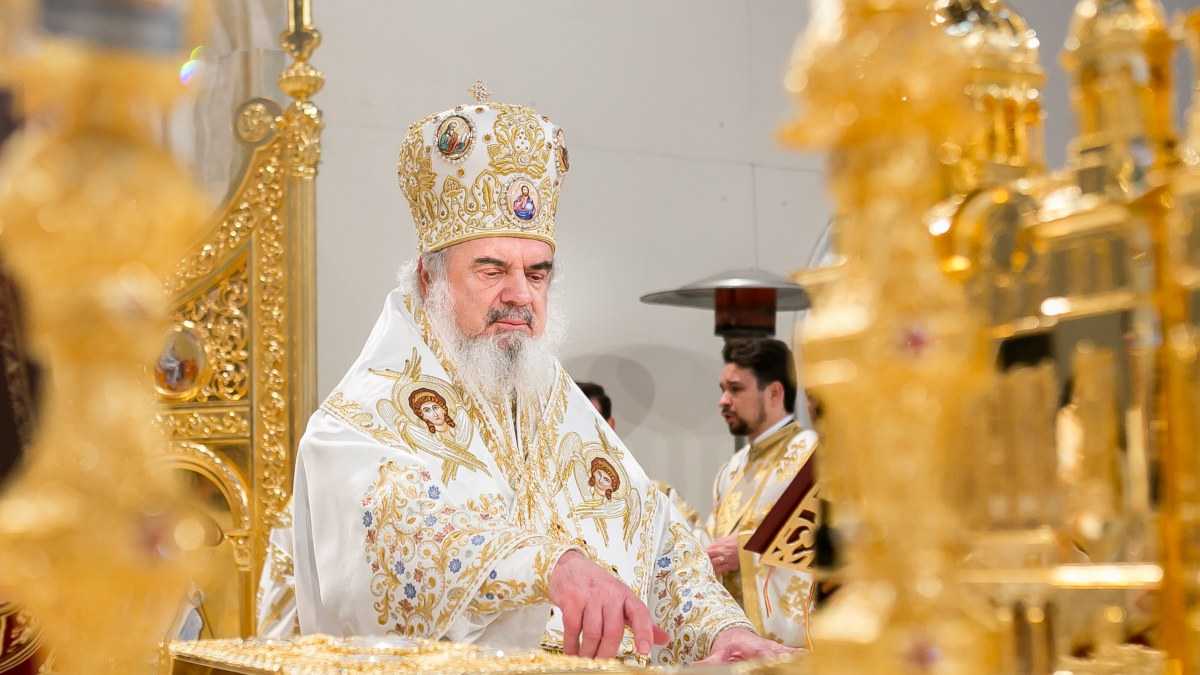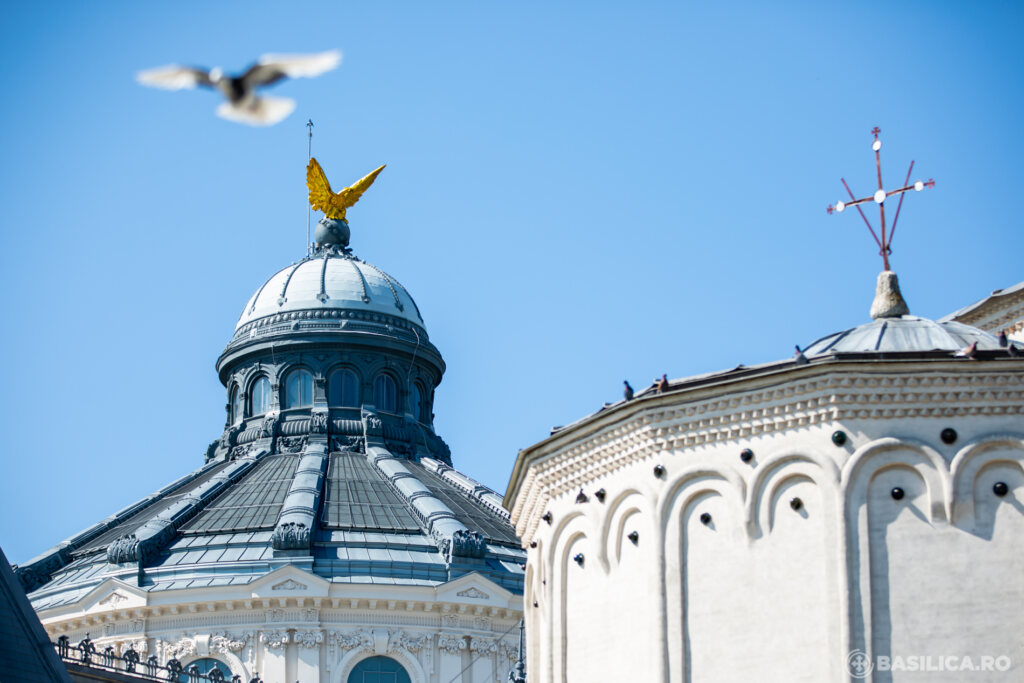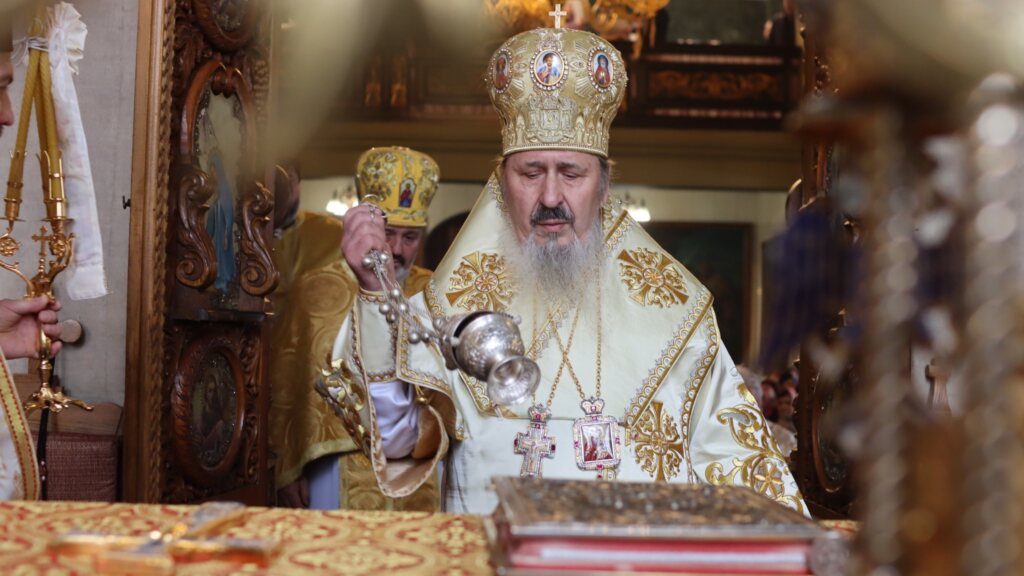“Saint Andrew the Apostle loves the Romanian people and helps the Romanian Orthodox Church and Romanians everywhere to keep the apostolic faith received from him,” the Patriarch of Romania said on Tuesday.
His Beatitude spoke about the extended stay of the Apostle to the Romanians in Dobruja, about his discreet way of preaching, and how the saint blessed essential works of the Romanian Orthodox Church in recent years.
When St. Andrew arrived in Scythia Minor, today’s Dobruja, he found Greek merchants, Roman occupiers and local Geto-Dacian tribes. His Beatitude stated that the Romanian people gradually formed in history as a new people, which became Christian when it was formed.
St Andrew preached discreetly to families
“Ethnogenesis and Christianization have been simultaneous and slow. It is a slow but deep Christianization, which later made the Romanian people, made up of Geto-Dacians and Romans, to withstand many waves of migrating peoples from the east, to preserve their identity and faith.”
Thus, St. Andrew “is the spiritual father or Apostle to the Romanians,” His Beatitude Patriarch Daniel said. He stayed in Dobruja for a long time, which explains his entry into the area’s folklore.
The longer stay is explained by the fact that “he did not practice conversion in the market places, like St. Paul, who preached to the crowds gathered in the city squares, but had another method of Christianization: preaching the gospel to Christian families, who also invited other non-Christians.”
“His method was discreet and based on preaching to various families or small gatherings of locals, or sometimes in caves, which were not as visible as the public squares in the cities,” Patriarch Daniel noted.
The reunion of the Romanians with their spiritual protector
“St. Andrew the Apostle meant a lot for our Christianization, but the awareness of this truth – namely that we received the apostolic faith from St. Andrew – was realized especially in 1996 when, on the patronal feast of St. Parascheva, the head of St. Andrew was brought to Iasi by His Eminence Metropolitan Nikodemos of Patra, between October 12 and 15,” His Beatitude recalled.
The saint’s head then reached Galați. One million pilgrims took part in Iasi alone because the Romanian Television invited historians, “especially professor Emilian Popescu of blessed memory, who proved based on historical documents that St. Andrew the Apostle is the Apostle to the Romanians, the one who preached the gospel of Christ in today’s Dobruja,” the Patriarch noted.
“St. Andrew thus returns by bringing his honourable head to Romania in 1996, as the Apostle to the Romanians, who finds – after many years of trials over the centuries and especially after many years of trials during the communist period of 45 years – a pious and faithful people.”
“It was so great a joy that the Romanian people met again with their apostle,” said the Patriarch of Romania. “That’s why, in the following years, many children who were born, boys and girls, were named Andrei or Andreea, so that today we have over 800,000 Romanians named Andrei or Andreea and derivatives.”
This moment led to the decision of the Holy Synod of the Romanian Orthodox Church to include in the Orthodox Calendar the surname of “Protector of Romanians” next to the name of St. Andrew. Furthermore, in 2012, the Romanian Parliament recognized the feast of the saint as a public holiday, so that the saint becomes the Protector of Romania “from a legal point of view also, that of the Parliament, not only from a church point of view.”
Blessing for the works at the National Cathedral
Patriarch Daniel evoked another moment in which the saint’s relics blessed essential works of the Romanian Orthodox Church in recent history.
“The new cathedral, called the Romanian People’s Salvation Cathedral or the National Cathedral, has Saint Andrew the First-Called, the Protector of Romania, as its second patron Saint, because he is the holy apostle closest to the Romanian people,” Patriarch Daniel explained.
When the head of St. Andrew was brought back to Romania in 2011, on the feast of St. Demetrius the New, it was carried around “the foundation of the new cathedral as a sign of blessing at the beginning of the [National] Cathedral.”
On the same day, the honourable head of the saint arrived in Sibiu, at the proclamation of the canonization of St. Andrew Șaguna, and later in Alba Iulia, at the proclamation of the canonization of St. Simeon Stephan.
“Thus, St. Andrew blessed with his honourable head Moldavia, Wallachia and Transylvania, through the pilgrimages of 1996 and 2011,” Patriarch Daniel underscored.
“In the Centennial Year 2018, at the consecration of the altar of the National Cathedral, the right hand of St. Andrew was brought by His Eminence Metropolitan Chrysostom of Patra. We also said: “St. Andrew’s head thought of the Cathedral and his hand helped us to raise it and to sanctify the altar of this cathedral.” So, we have a special joy when we commemorate St. Andrew.”
His Beatitude also mentioned that a fragment of the relics of St. Andrew given by Cardinal Christoph Schönborn of Vienna would be transferred from the Patriarchal Residence to the National Cathedral when it is ready.
“All these data show us that St. Andrew loves the Romanian people, helps the Romanian Orthodox Church and Romanians everywhere to keep the apostolic faith received from him,” said the Patriarch of Romania.
His Beatitude concluded his speech by sending congratulations to all those named Andrei, Andreea and derivatives, praying to St. Andrew “to give them health and happiness, peace and joy and much help in all good deeds.”
Photography courtesy of Basilica.ro Files
Follow us on Twitter: @BasilicaNews






